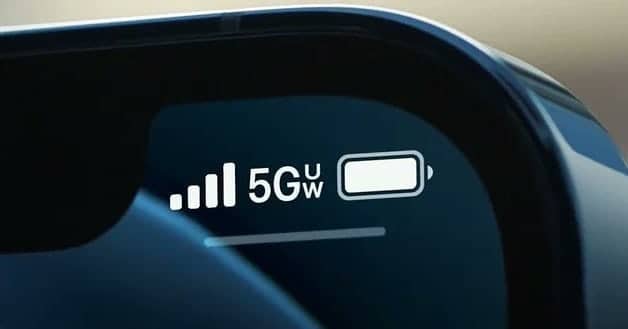The fifth generation of cellular mobile networks, 5G, is the next big thing in wireless connectivity. But what exactly is 5G? What are its key features and benefits? In this article, we’ll take a look at 5G mmWave technology and explain everything you need to know about it.
So, what is 5G mmWave technology? Put simply, it is a new type of wireless technology that uses extremely high frequency waves to transmit data. These waves are known as millimeter waves (mmWaves), and they have very short wavelengths. This means that they can carry a lot of data at very high speeds – up to 10 gigabits per second (Gbps).
- What was a benefit of second generation sandbox technology?
- The Benefits of Salesforce Service Cloud Elements in Customer Service
One of the key benefits of 5G mmWave technology is that it has the potential to support massive numbers of devices and users. It can also provide much higher data rates than current 4G LTE networks. And because it uses very high frequencies, 5G mmWave signals can travel short distances and penetrate obstacles like walls and buildings better than lower frequency signals.
However, there are some challenges associated with 5G mmWave technology. One is that the short wavelengths make the signals more susceptible to interference from weather conditions and other objects in the environment. Another challenge is that the high frequencies don’t propagate well over long distances, so 5G mmWave networks will likely need to be denser than 4G LTE networks.
Despite these challenges, 5G mmWave technology is seen as a key part of the future of wireless connectivity. So, if you’re wondering what all the fuss is about, now you know!
is mmwave 5g worth it?
mmWave 5G is generally seen as a key technology for the future of wireless connectivity. So, if you’re looking for the fastest and most reliable data speeds, it’s definitely worth considering.
The main benefits of 5G mmWave technology are its high speeds and capacity. Additionally, it has the potential to support massive numbers of devices and users. And because it uses very high frequencies, 5G mmWave signals can travel short distances and penetrate obstacles like walls and buildings better than lower frequency signals.
Do keep in mind that there are some challenges associated with 5G mmWave technology, such as its susceptibility to interference and its limited range. However, these challenges are generally seen as manageable, and 5G mmWave is still seen as a key part of the future of wireless connectivity.
When is the 5g mmwave technology blocked by physical barriers?
Like others, the 5g mmwave technology limitations have been a physical barrier.
The signals can be blocked by buildings and walls. Additionally, the high frequencies make the signals more susceptible to interference from weather conditions and other objects in the environment.
The main challenges associated with 5G mmWave technology are its susceptibility to interference and its limited range. Additionally, the high frequencies make the signals more susceptible to interference from weather conditions and other objects in the environment. As a result, 5G mmWave networks will likely need to be denser than 4G LTE networks. Another challenge is that the short wavelengths make the signals more susceptible to interference from weather conditions and other objects in the environment.
How can I reduce 5g mmwave interference?
There are a few things you can do to reduce interference on your 5G mmWave network:
– Use a higher frequency band if possible. This is the easiest way to reduce interference, but it may not always be possible.
– Increase the power of the signal. This will make the signal more resistant to interference, but it will also require more power from the transmitter.
– Use adaptive beamforming. This is a type of antenna technology that can help to reduce interference by directing the signal towards the receiver.
– Use multiple input, multiple output (MIMO) technology. This uses multiple antennas at both the transmitter and receiver to send and receive data simultaneously. This helps to reduce interference by spreading the signal over more paths.
– Use error correction coding. This is a process that adds redundant data to the signal in order to improve its resistance to errors caused by interference.
– Use a frequency-hopping scheme. This is a method of transmitting data that changes the frequency of the signal periodically. This can help to reduce interference by making it more difficult for an interfering signal to lock onto the desired signal.
Do keep in mind that these solutions may not always be possible, and they may not always be effective. Additionally, they may require additional equipment or infrastructure, which could increase the cost of your 5G mmWave network.
What are benefits of 5g mmwave technology accenture?
Accenture is leading the way to a new era in smart technology, by harnessing the power of 5G mmwave network technology. This state-of-the-art wireless solution has numerous advantages, such as delivering lightning fast data transmission speeds at much shorter distance, accessing super-fast connection times with reduced latency, and providing an improved user experience. By providing these enhancements, Accenture is transforming how we connect with one another from city to city and region to region. With its remarkable reliability, security plus low cost compared to traditional networks, 5G mmwave is becoming the go to choice of tech firms like Accenture who are implementing connectivity solutions for their clients.
– 5G mmwave technology will be much faster than current 4G networks.
– It will be able to handle more data at once, making for a smoother experience.
Emotional benefits:
– Finally be able to download movies in seconds.
– Never have to worry about buffering again.




